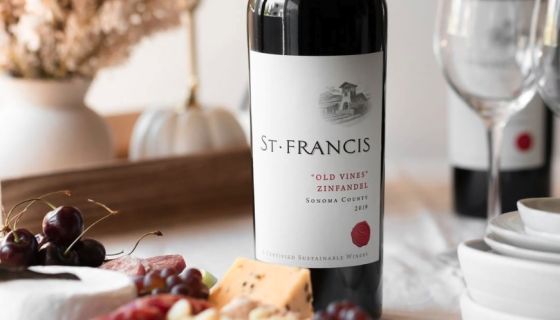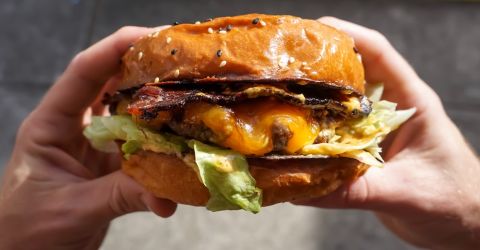From $14.99, CA$31, £32, HK$295, SG$73
If there's a time and a place for everything, then a takeaway cheeseburger deserves the ideal wine just as much as a Michelin-starred dégustation menu – although if you need more, there are many other reasons to recommend this particular Zinfandel.
Last Friday night, Burger Frites in my newly adopted Singapore neighbourhood of Joo Chiat provided the patty, pictured below, while local wine merchant Bound By Wine stocked the St Francis Old Vine Zinfandel. Rarely has an impromptu marriage been so happy.
The Zinfandel's rambunctious fruit and XXL structure were ideal with the smoky, caseous burger, but flavour scrutiny is not really the point here. This was a match that was more visceral than cerebral: shamelessly indulgent, incredibly satisfying and I wolfed down every mouthful.
There is more to know about this particular Zinfandel, however, that commends it even further. For a start, winemaker Katie Madigan has a crowded mantelpiece: not only Zinfandel Producer of the Year in 2014 and 2015, but also Best Woman Winemaker in 2015. St Francis winery is certified by the California Sustainable Winegrowing Alliance, following practices that include water conservation, renewable energy usage and composting, as well as various community and environmental programmes. Furthermore, this old-vine cuvée comes from from vines at least 50 years of age, fitting our own campaign to honour such important resources.
Such factors may not necessarily affect quality, but they are very relevant to how we choose wine in these environmentally and socially conscious times. Here at JancisRobinson.com we take these matters increasingly seriously, although I'm afraid I can't verify the sustainability of that particular cheeseburger.
A brief side note on Zinfandel more generally. Since I've always had a preference for riper and fuller reds, I have regularly returned to this blockbuster variety, preferably examples whose alcohol level doesn't exceed 15% (the 2019 vintage of St Francis Old Vine Zinfandel clocks in at 14.8%). Perhaps unexpectedly, Singapore has a particular thirst for these hearty reds – Amarone is a notable bestseller – so Zinfandel is accordingly popular.
I have therefore been drinking a lot of Zinfandel recently, especially while travelling in California last month. The best conventionally made examples are so gloriously uncompromising in their fruit concentration and lusciousness – and therefore such a great representation of the far end of the red-wine spectrum – that they deserve regular rotation in any wine-lover's glass.
However, I'm afraid I have not enjoyed any of the alternative styles of Zinfandel I encountered. These are variously made with carbonic maceration, low extraction, low sulphites and various other minimal techniques. In my experience, these (literally) pale imitations not only fail to represent Zinfandel's key characteristics, but have lacked balance and fruit definition. This is not intended to criticise natural wine en masse, just to suggest that Zinfandel is not the ideal raw material for such styles.
According to Wine-Searcher, St Francis Old Vine Zinfandel is distributed quite widely, and if the current 2019 isn't available, then I would not hesitate to recommend the 2018 instead. The cheeseburger choice is entirely yours.
For other great Zinfandel producers to discover, see around 300 Zinfandel tasting notes in our database.















